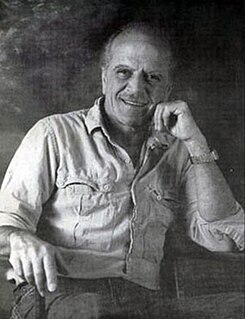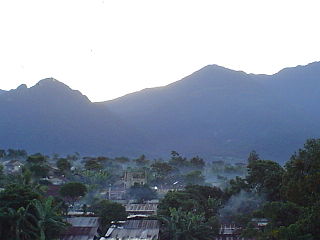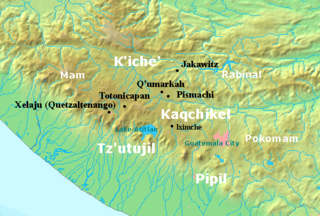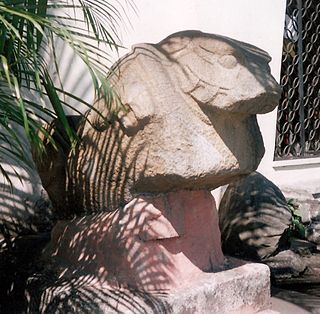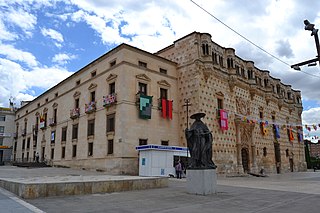There is a wide variety of museums in Guatemala, with collections varying from pre-Columbian Mesoamerican artefacts to Spanish colonial art and collections of regional interest.
Contents
| Museum | Photograph | Municipality | Department | Subject | Summary |
|---|---|---|---|---|---|
| Casa de la Cultura Flavio Herrera [1] | Guatemala City | Guatemala Department | |||
| Casa de la Cultura Julio Cesar de la Roca [1] |  | Quetzaltenango | Quetzaltenango Department | ||
| Casa del Callejón Castillo Hermanos [1] | Guatemala City | Guatemala Department | |||
| CASA Museo Iinternacional de Movimientos Artísticos (Casa M.I.M.A.) [2] | Guatemala City | Guatemala Department | 19th century life | ||
| Centro de Visitantes y Museo de Sitio de Iximche [2] | Tecpán Guatemala | Chimaltenango Department | Maya civilization | ||
| Centro de Visitantes y Museo de Sitio de K'umarcaaj [3] |  | Santa Cruz del Quiché | Quiché Department | Maya civilization | |
| Centro de Visitantes y Museo de Sitio de Litica, Tikal [2] | Flores | Petén Department | Maya civilization | ||
| Centro de Visitantes y Museo de Sitio de Quiriguá [2] | Los Amates | Izabal Department | Maya civilization | ||
| Centro de Visitantes y Museo de Sitio de Zaculeu [3] | Huehuetenango | Huehuetenango Department | Maya civilization | ||
| Centro de Visitantes y Museo de Sitio Sylvanus G. Morley, Tikal [3] | Flores | Petén Department | Maya civilization | ||
| Mapa en Relieve de Guatemala [1] | Guatemala City | Guatemala Department | |||
| Museo Arqueológico Casa Santo Domingo [1] | Antigua Guatemala | Sacatepéquez Department | |||
| Museo Arquidiócesano de Santiago de Guatemala [1] | Guatemala City | Guatemala Department | |||
| Museo Bodegas de Principios de Siglo XIX [1] | Guatemala City | Guatemala Department | |||
| Museo Casa del Tejido Antiguo [1] | Antigua Guatemala | Sacatepéquez Department | |||
| Museo Casa K'OJOM [2] | Jocotenango | Sacatepéquez Department | Maya music | ||
| Museo Colonial Casa Santo Domingo [1] | Antigua Guatemala | Sacatepéquez Department | |||
| Museo Comunitario "Rabinal Achi" [1] | Rabinal | Baja Verapaz Department | |||
| Museo de Armas de Santiago de los Caballeros [2] | Antigua Guatemala | Sacatepéquez Department | Colonial Guatemala | ||
| Museo de Arte Colonial [2] | Antigua Guatemala | Sacatepéquez Department | |||
| Museo de Arte Guatemalteco Primitivo-Contemporaneo [2] | Antigua Guatemala | Sacatepéquez Department | Modern Maya art | This museum is dedicated to the display of contemporary art by modern Maya artists of Kaqchikel and Tz'utujil ethnicity, and twelved themed exhibitions on Guatemalan folklore, housed within a period building close to Antigua's central park. [4] | |
| Museo de Artes y Artesanías Populares de Sacatepéquez [1] | Antigua Guatemala | Sacatepéquez Department | |||
| Museo de Historia Natural de la USAC [1] | Guatemala City | Guatemala Department | |||
| Museo de la Farmacia de Guatemala [1] | Antigua Guatemala | Sacatepéquez Department | |||
| Museo de la Universidad de San Carlos [2] | Guatemala City | Guatemala Department | |||
| Museo de los Niños [2] |  | Guatemala City | Guatemala Department | Children's museum | |
| Museo de Semana Santa [1] | Guatemala City | Guatemala Department | |||
| Museo del Café [2] | Jocotenango | Sacatepéquez Department | Coffee production | This private museum is situated in a former coffee mill and preserves the original late 19th century machinery, including its water wheel. The museum was founded in 2000 as part of the Centro Cultural La Azotea. The exhibition covers all stages of coffee production including cultivation, harvest, roasting and trade. The collection includes milling machines from different parts of the world. The museum also includes educational materials such as production statistics for the most important coffee producing countries. Facilities include a shop and cafeteria [5] The grounds of the museum include a working plantation producing coffee that is processed on-site for sale to visitors. [6] | |
| Museo del Ferrocarril [1] |  | Guatemala City | Guatemala Department | Railway | |
| Museo del Jade y Semana Santa [1] | Antigua Guatemala | Sacatepéquez Department | |||
| Museo del Libro Antiguo [2] | Antigua Guatemala | Sacatepéquez Department | |||
| Museo Fray Francisco Vázquez [1] | Guatemala City | Guatemala Department | |||
| Museo Heráldico y de Armas del Ejercito [2] | Guatemala City | Guatemala Department | |||
| Museo Itinerante de Ciencia y Tecnología [2] | Guatemala City | Guatemala Department | Science museum | ||
| Museo Ixchel del Traje Indígena [2] |  | Guatemala City | Guatemala Department | Maya textiles | |
| Museo Katinamit [2] | San Cristóbal Verapaz | Alta Verapaz Department | |||
| Museo Miraflores [2] |  | Guatemala City | Guatemala Department | ||
| Museo Nacional de Arqueología y Etnología [2] |  | Guatemala City | Guatemala Department | ||
| Museo Nacional de Arte Moderno [2] | |||||
| Museo Nacional de Historia [2] | |||||
| Museo Nacional de Historia Natural [2] | |||||
| Museo Nacional de Historia Natural "JORGE A. IBARRA" [2] | |||||
| Museo Numimastico de Guatemala [2] | |||||
| Estanzuela Museum of Paleontology and Archaeology [2] | Estanzuela | Zacapa Department | |||
| Museo Popol Vuh [2] | Guatemala City | Guatemala Department | |||
| Museo Postal y Filatelico [2] | |||||
| Museo Regional de Arqueología de la Democracia [2] |  | La Democracia | Escuintla Department | Monte Alto culture | |
| Museo Regional de Arqueología Santiago [3] | Coatepeque | Quetzaltenango Department | Pre-Columbian archaeology | ||
| Museo Regional de Chichicastenango [3] | Chichicastenango | Quiché Department | History, archaeology and ethnology | ||
| Museo Regional de Santiago Sacatepéquez [2] | Santiago Sacatepéquez | Sacatepéquez Department | Archaeology and ethnology [3] | ||
| Museo Regional del Sureste de Petén [2] |  | Dolores | Petén Department | Maya civilization | |
| Museo Regional del Trapiche [2] | |||||
| Museo San Clemente y Casa de la Cultura [2] | |||||
| Museo San Juan del Obispo [2] | |||||
| Museo Vical de Arte Precolombino y Vidrio Moderno [2] | Antigua Guatemala | Sacatepéquez Department | |||
| Palacio Nacional de Cultura [2] |


